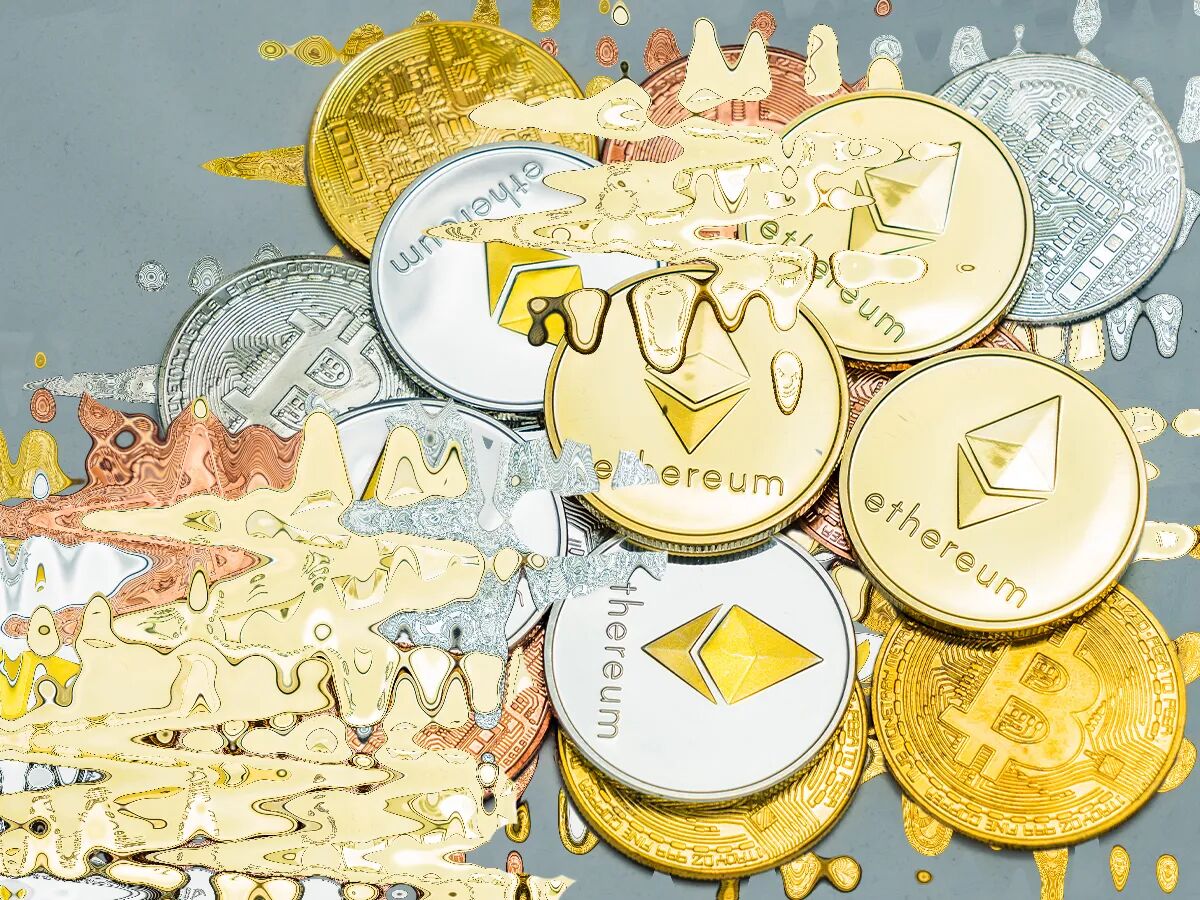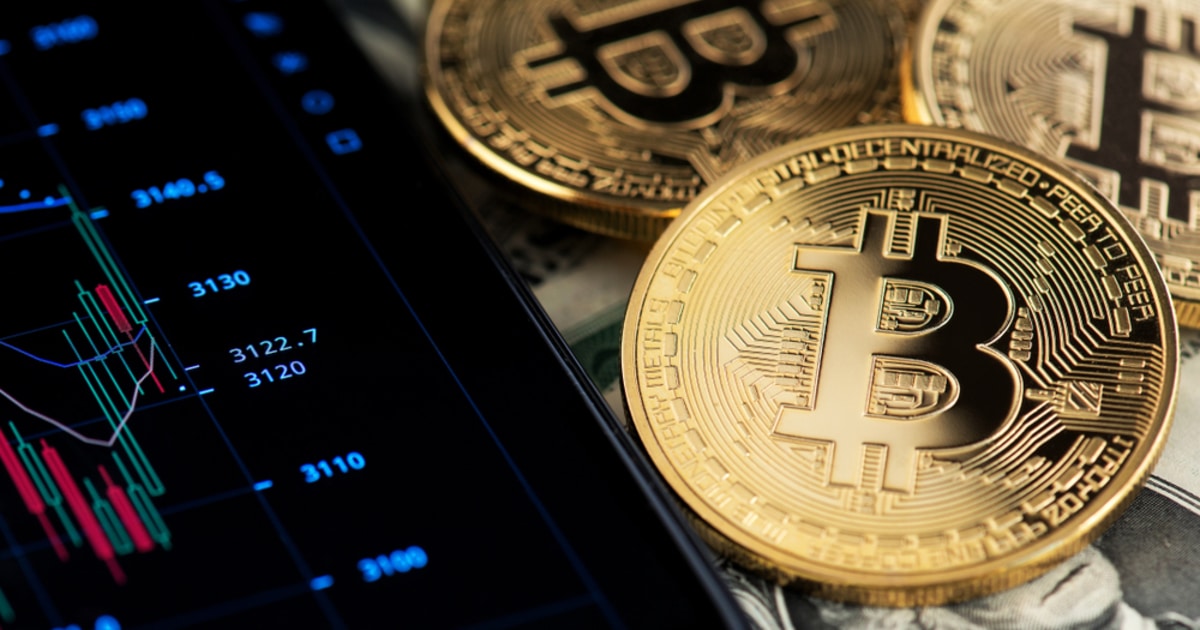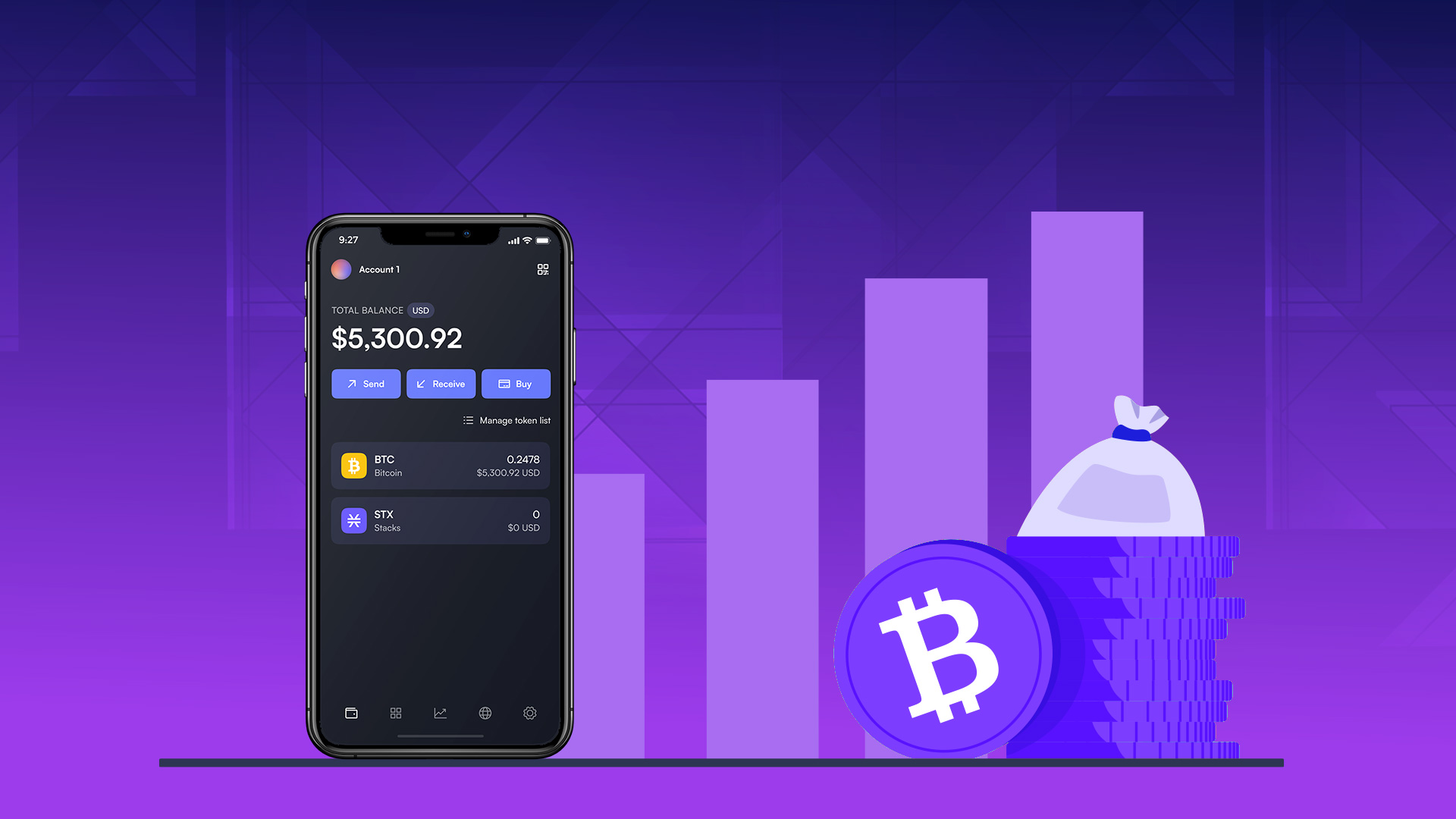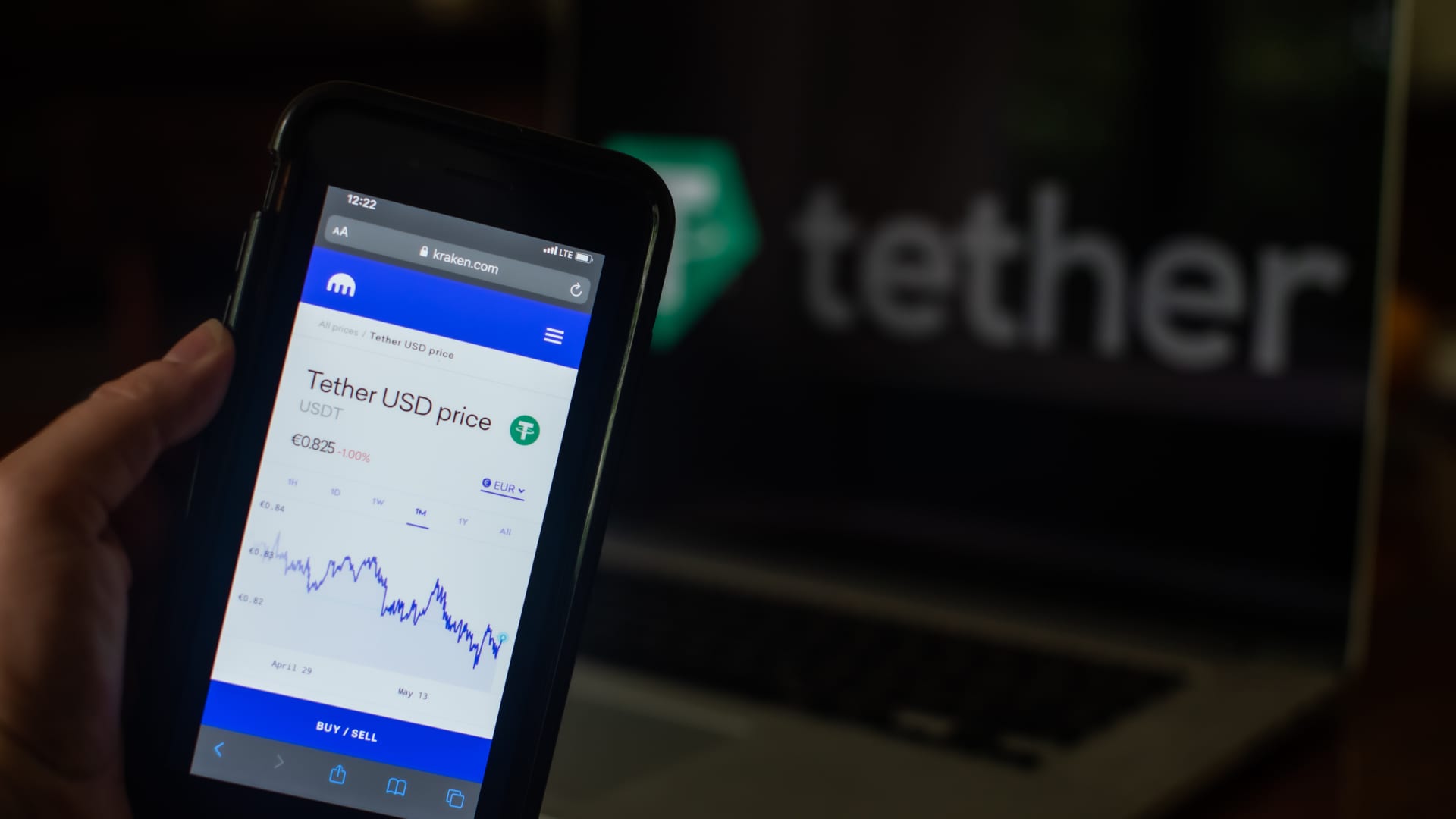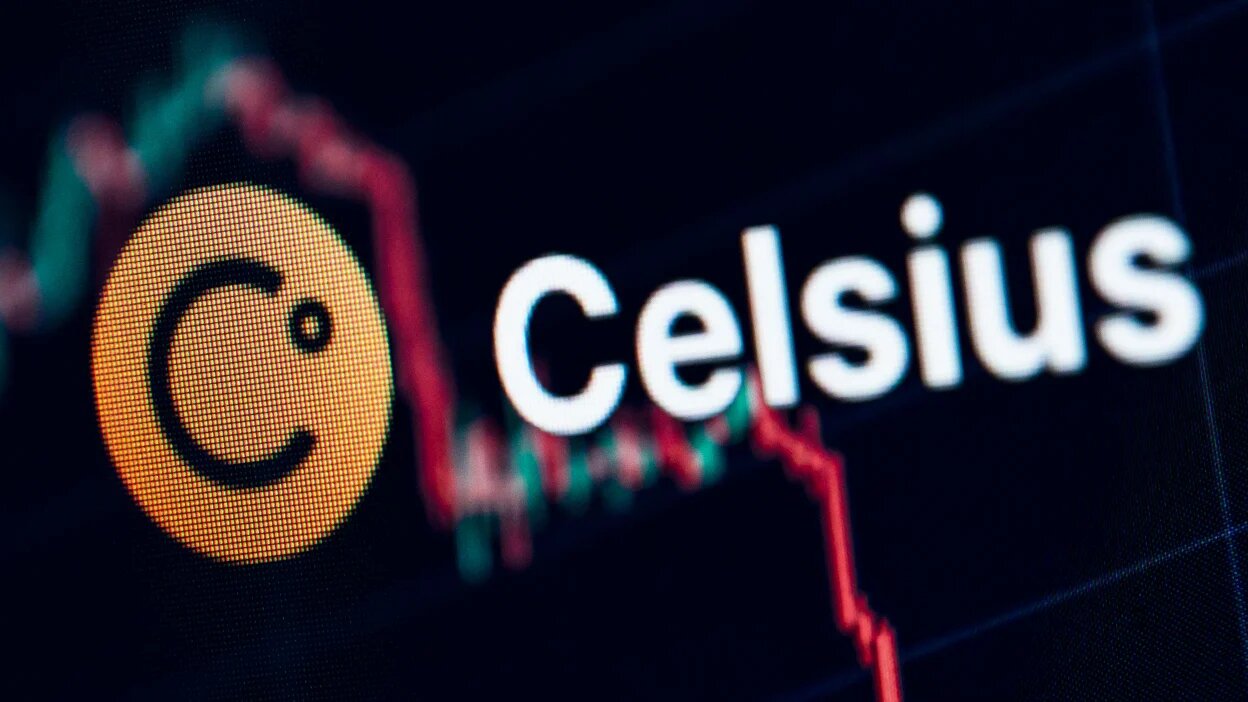Introduction
Welcome to the world of crypto assets, where finance meets technology. Over the past decade, the rise of cryptocurrencies has sparked a global phenomenon, captivating the attention of investors, tech enthusiasts, and the general public alike. From the groundbreaking success of Bitcoin to the emergence of numerous altcoins, crypto assets have revolutionized the way we perceive, transact, and store value online.
But what exactly are crypto assets, and how do they work? In this article, we will delve into the fascinating world of digital currencies, uncovering their types, creation process, and the underlying technology that powers them – the blockchain. We will also explore the benefits they offer, as well as the risks and challenges associated with them.
At its core, a crypto asset is a digital representation of value that utilizes cryptographic principles to secure and validate transactions. Unlike traditional fiat currencies issued by central banks, crypto assets are decentralized, meaning that no single entity has control over them. They exist on blockchain networks, which are distributed ledgers maintained by a network of computers or nodes spread across the globe.
The blockchain technology, the backbone of crypto assets, ensures transparency, immutability, and security. Every transaction made using a crypto asset is recorded on the blockchain, forming a permanent, unalterable record. This eliminates the need for intermediaries or trusted third parties, making transactions faster, cheaper, and more secure.
As the most well-known cryptocurrency, Bitcoin paved the way for the crypto asset revolution. Created in 2009 by an anonymous person or group of individuals known as Satoshi Nakamoto, Bitcoin operates on a peer-to-peer network and has gained global recognition as a decentralized digital currency. Since then, a multitude of altcoins, or alternative cryptocurrencies, have emerged, each with its unique features, use cases, and goals.
While crypto assets offer numerous benefits, such as increased financial inclusivity, borderless transactions, and potential investment gains, they also come with risks and challenges. One of the main concerns is their volatility, with prices often experiencing significant fluctuations. Moreover, the regulatory landscape surrounding crypto assets is still maturing, leading to uncertainty and potential risks for investors and users.
What are Crypto Assets?
Crypto assets, also known as cryptocurrencies, are digital or virtual forms of currency that utilize cryptography for secure financial transactions, control the creation of new units, and verify the transfer of assets. They are a subset of digital assets that rely on cryptographic techniques to ensure the integrity and security of transactions.
The defining characteristic of crypto assets is their decentralized nature. Unlike traditional currencies that are controlled by central banks or governments, crypto assets operate independently and are not subject to any central authority. They are typically based on blockchain technology, which is a distributed ledger that records every transaction made using the crypto asset. This decentralized nature ensures transparency, immutability, and resistance to fraud or censorship.
One of the key aspects of crypto assets is their ability to enable peer-to-peer transactions without the need for intermediaries. Traditionally, when making a payment or transferring assets, a trusted third party such as a bank or payment processor would be involved. However, with crypto assets, individuals can transact directly with one another, reducing fees and increasing efficiency.
Furthermore, crypto assets offer a high level of security. The use of cryptographic techniques ensures that transactions are secure and that the identities of the transacting parties are protected. This makes crypto assets an appealing option for individuals and businesses seeking secure and private financial transactions.
Crypto assets also have limited supply. Many cryptocurrencies are designed to have a predetermined maximum supply, which means that there is a finite amount of the crypto asset that can ever exist. This scarcity can contribute to their value and investment potential.
In recent years, the use cases for crypto assets have expanded beyond just being a form of currency. Many crypto assets now serve as platforms for decentralized applications, smart contracts, and crowdfunding. These applications leverage the underlying technology of the crypto asset to provide innovative solutions in various sectors, such as finance, supply chain management, and healthcare.
Overall, crypto assets are a revolutionary form of digital currency that offers decentralization, security, and innovative applications. While there are still challenges and regulatory considerations surrounding their adoption and use, the potential impact of crypto assets on the global financial system and beyond cannot be denied.
Types of Crypto Assets
The world of crypto assets is incredibly diverse, with a wide range of cryptocurrencies available in the market today. While Bitcoin is the most well-known and dominant cryptocurrency, there are numerous other types of crypto assets, each with its unique characteristics and use cases.
1. Bitcoin (BTC): Bitcoin is the first and most famous cryptocurrency, created in 2009 by an anonymous individual or group of individuals known as Satoshi Nakamoto. It operates on a decentralized network and has established itself as a digital store of value, a medium of exchange, and a hedge against traditional financial systems.
2. Altcoins: Altcoins, short for alternative coins, refer to all cryptocurrencies other than Bitcoin. These include Ethereum (ETH), Ripple (XRP), Litecoin (LTC), and many others. While Bitcoin remains the dominant player in the crypto market, altcoins have gained significant popularity due to their unique features and use cases.
3. Stablecoins: Stablecoins are a type of crypto asset designed to maintain a stable value in relation to a specific asset or basket of assets. They are often pegged to fiat currencies like the US dollar or a commodity such as gold. Stablecoins provide a more reliable and less volatile option for individuals and businesses to transact in the crypto ecosystem.
4. Utility Tokens: Utility tokens serve as an access key or digital asset within a specific blockchain-based platform or application. They enable users to access and utilize particular services, products, or functionalities within the ecosystem. Examples of utility tokens include Binance Coin (BNB) and Basic Attention Token (BAT).
5. Security Tokens: Security tokens represent ownership in a real-world asset, such as shares in a company, real estate properties, or investment funds. They are subject to securities regulations and offer investors ownership rights and potential dividends. Security tokens bring traditional financial assets onto the blockchain, providing increased liquidity and accessibility.
6. Privacy Coins: Privacy coins focus on enhancing the privacy and anonymity of transactions. They utilize various cryptographic techniques to obfuscate transaction details and shield the identities of participants. Monero (XMR) and Zcash (ZEC) are examples of privacy coins that offer enhanced confidentiality for users.
These are just a few examples of the various types of crypto assets in existence. Each type serves a specific purpose and caters to different user needs. It is important to conduct thorough research and understand the fundamentals of each crypto asset before investing or transacting with them.
Bitcoin and Altcoins
Bitcoin, the pioneer of cryptocurrencies, has garnered immense attention and recognition since its inception. However, it is just one of many cryptocurrencies collectively referred to as altcoins (alternative coins). While Bitcoin remains the dominant player in the crypto market, altcoins offer a diverse range of options and opportunities for investors and users.
Bitcoin (BTC): Bitcoin is the first and most well-known cryptocurrency, introduced in 2009 by an anonymous individual or group of individuals known as Satoshi Nakamoto. As a decentralized digital currency, Bitcoin operates on a peer-to-peer network, allowing users to transact directly without the need for intermediaries. Bitcoin’s key purpose is to serve as a decentralized store of value and a medium of exchange, providing individuals with control and ownership over their funds.
Altcoins: Altcoins encompass all other cryptocurrencies besides Bitcoin. They have emerged as alternatives to Bitcoin and offer various improvements, use cases, and features. Some of the notable altcoins include:
- Ethereum (ETH): Ethereum is a decentralized platform that enables the creation and execution of smart contracts. It introduced the concept of programmable blockchain, allowing developers to build decentralized applications (DApps) and issue new cryptocurrencies through initial coin offerings (ICOs).
- Ripple (XRP): Ripple aims to facilitate fast cross-border transactions and improve liquidity in financial institutions. It utilizes a distributed ledger technology called the RippleNet and has gained popularity among banks and payment providers.
- Litecoin (LTC): Often referred to as the silver to Bitcoin’s gold, Litecoin is a peer-to-peer cryptocurrency that shares many similarities with Bitcoin in terms of functionality. It offers faster block generation time and a different hashing algorithm, which provides increased transaction speed and efficiency.
- Bitcoin Cash (BCH): Bitcoin Cash is a result of a hard fork from Bitcoin that occurred in 2017. It aims to improve scalability and transaction speed by increasing block size, allowing for more transactions to be processed in each block.
- Cardano (ADA): Cardano is a blockchain platform that focuses on security, scalability, and sustainability. It aims to provide a secure platform for the development of decentralized applications and smart contracts, with a strong emphasis on research and scientific methodologies.
These are just a few examples of altcoins, but there are thousands of other cryptocurrencies available in the market, each with its own unique features and use cases. Altcoins provide opportunities for diversification and potential investment gains, but it’s essential to conduct thorough research and understand the fundamentals before investing in any altcoin.
It’s worth noting that the value and market dynamics of both Bitcoin and altcoins are subject to volatility and market fluctuations. Prices can experience significant highs and lows, influenced by factors such as market sentiment, technological developments, regulatory changes, and investor speculation. Therefore, it’s advisable to approach crypto investments with caution and consider factors like risk tolerance and long-term investment goals.
How are Crypto Assets Created?
The creation process of crypto assets involves complex mathematical algorithms and consensus mechanisms. Unlike traditional fiat currencies, which are created and regulated by central banks, crypto assets are typically generated through a process called mining or minting, depending on the specific cryptocurrency.
Mining: Mining is the process by which new units of a cryptocurrency, such as Bitcoin, are created and added to the blockchain. Miners, individuals or entities with specialized mining hardware, compete to solve complex mathematical puzzles to validate and verify transactions on the network. Once a miner successfully solves a puzzle, a new block is added to the blockchain, and the miner is rewarded with a certain amount of the cryptocurrency as a mining reward. This incentivizes miners to devote computational power and resources to the network.
The mining process also contributes to the security and integrity of the blockchain. Each block contains a cryptographic hash that connects it to the previous block, creating an unalterable chain of transactions. This ensures the immutability and trustworthiness of the blockchain.
Minting: Some cryptocurrencies, such as Proof of Stake (PoS) based coins, do not rely on mining but instead use a process called minting. In PoS networks, individuals hold and “stake” a certain amount of the cryptocurrency to participate in the consensus process. Validators are chosen based on their stake, and they validate transactions and create new blocks. Validators are rewarded with transaction fees or newly minted coins. Minting is considered a more energy-efficient alternative to mining.
Once a crypto asset is created, it can be bought, sold, or used for various purposes. The value of a cryptocurrency is determined by factors such as market demand, utility, scarcity, and investor sentiment. Cryptocurrencies are traded on cryptocurrency exchanges, where people can buy and sell them based on market prices.
It’s worth noting that not all cryptocurrencies are mineable or mintable. Some crypto assets are pre-mined, meaning that a fixed supply of coins is created before the network is made public. Pre-mining can be done for various reasons, such as distributing tokens to early investors, funding the development of the project, or allocating tokens for specific purposes.
The creation and issuance of new crypto assets are subjected to certain rules and protocols defined by the cryptocurrency’s underlying technology and the governance structure of the network. These rules ensure the fairness, security, and functionality of the crypto asset ecosystem.
Understanding the creation process of crypto assets is crucial for investors and users to comprehend the fundamental dynamics and value proposition of different cryptocurrencies. It is essential to conduct thorough research and due diligence before engaging with any crypto asset, taking into consideration factors such as the mining or minting process, token distribution, and the long-term sustainability of the project.
The Blockchain Technology
The blockchain technology is the backbone of crypto assets, providing a secure and transparent framework for recording and verifying transactions. It is a distributed ledger system that enables the decentralized and immutable storage of data across a network of computers or nodes.
At its core, a blockchain consists of a series of blocks, each containing a list of transactions. These blocks are linked together in a chronological order, forming a chain. Each block contains a unique identifier called a hash, which is generated by applying a cryptographic algorithm to the data within the block.
One of the key features of the blockchain is its distributed nature. Instead of relying on a central authority or intermediary to validate transactions, multiple nodes in the network verify each transaction independently. Once a consensus is reached among the nodes, the transaction is added to a new block, which is then appended to the existing chain.
This decentralization and consensus mechanism eliminate the need for trust in a single party, making the blockchain resistant to tampering and fraud. Since each block contains the hash of the previous block, any attempt to change the data in a block will require altering the subsequent blocks, which is computationally expensive and practically impossible in a well-established blockchain network.
The immutability of the blockchain makes it a powerful tool for various use cases beyond cryptocurrencies. It can be used for supply chain management, digital identity verification, healthcare records, and more. By storing transaction data in a transparent and tamper-proof manner, blockchain technology enhances accountability, security, and efficiency in many industries.
There are different types of blockchains, including public blockchains, private blockchains, and consortium blockchains. Public blockchains, like the Bitcoin blockchain, are open to anyone, and anyone can participate in the validation process. Private blockchains are restricted to a specific group or organization, offering more control over the network. Consortium blockchains involve multiple organizations working together to verify transactions and maintain the network.
While the blockchain technology offers numerous advantages, it is not without its challenges. One significant challenge is scalability, as the size of the blockchain grows with each added transaction, requiring more storage and processing power. There are ongoing efforts to improve scalability, such as the development of off-chain solutions and the implementation of sharding techniques.
Overall, the blockchain technology serves as the foundation for the secure and decentralized operation of crypto assets. Its ability to provide transparency, immutability, and trust without the reliance on intermediaries has the potential to revolutionize various industries and reshape the way we transfer, store, and verify data and assets.
Benefits of Crypto Assets
Crypto assets offer a range of benefits that make them appealing to individuals, businesses, and even governments. From increased financial inclusivity to enhanced security and efficiency, here are some key advantages of crypto assets:
Decentralization: One of the core principles of crypto assets is their decentralized nature. Unlike traditional financial systems that depend on centralized authorities, crypto assets operate on blockchain networks, with transaction verification distributed across multiple nodes. This decentralization eliminates the need for intermediaries, reduces costs, and fosters financial inclusion, allowing anyone with an internet connection to participate in the global economy.
Transparency: The transparency offered by blockchain technology is a significant advantage of crypto assets. Every transaction is recorded on the blockchain, creating an auditable and tamper-proof trail. This transparency helps foster trust among participants and enhances accountability, making it easier to verify and track transactions.
Security: Crypto assets utilize advanced cryptographic techniques to protect transactions and assets. Each transaction on the blockchain is encrypted and linked to the previous transaction, making it difficult for unauthorized parties to alter or forge transactions. Additionally, the decentralized nature of crypto assets limits the potential for single points of failure or hacking attacks that are common in traditional centralized systems.
Fast and Efficient Transactions: Crypto asset transactions can be executed directly between parties without the need for intermediaries, leading to quicker settlement times. Traditionally, financial transactions may require days or even weeks to finalize, especially for cross-border transactions. With crypto assets, transactions can be completed within minutes or even seconds, offering significant time savings and boosting efficiency.
Lower Transaction Fees: Crypto asset transactions typically involve lower fees compared to traditional financial systems. Traditional payment networks often charge fees for processing transactions and currency conversions. In contrast, crypto assets can reduce or eliminate many of these fees, making it more cost-effective to transact, particularly for cross-border payments.
Financial Inclusion: Crypto assets provide opportunities for individuals in unbanked or underbanked regions to access financial services. With just a smartphone and an internet connection, individuals can store, send, and receive crypto assets, bypassing the need for a traditional bank account. This can empower individuals who have limited access to banking services and enable them to participate in the global economy.
Innovation and Investment Opportunities: The crypto asset ecosystem has created opportunities for innovation and investment. Blockchain technology has facilitated the development of decentralized applications, smart contracts, and new digital assets. This innovation opens up possibilities for new business models, crowdfunding, and investment opportunities for individuals and institutions.
These benefits, among others, have contributed to the growing adoption and interest in crypto assets worldwide. However, it’s essential to recognize that investing and participating in the crypto asset market carries risks and challenges, including volatility and regulatory uncertainties. Therefore, individuals should carefully evaluate their risk tolerance and conduct thorough research before engaging with crypto assets.
Risks and Challenges
While crypto assets offer numerous benefits, they also come with inherent risks and challenges that individuals and investors should be aware of. Understanding these risks is crucial for making informed decisions and mitigating potential pitfalls. Here are some of the key risks and challenges associated with crypto assets:
Volatility: Crypto assets, especially cryptocurrencies like Bitcoin, are known for their high price volatility. The value of crypto assets can experience significant fluctuations within short periods, leading to potential gains but also substantial losses. The volatile nature of the market makes it important for individuals to carefully consider their risk tolerance and investment strategies.
Regulatory Uncertainty: The regulatory landscape surrounding crypto assets is still evolving, with varying approaches from different jurisdictions. Regulatory actions or government interventions can impact the value and usability of crypto assets. Investors and users should stay up to date with the regulatory frameworks in their respective jurisdictions and be mindful of the potential risks and compliance requirements.
Security Risks: While the blockchain technology itself offers robust security, there are still security risks associated with the use of crypto assets. Cyber-attacks, scams, and hacking incidents targeting crypto exchanges or individual wallets can result in the loss of funds. It’s crucial to employ best practices for securing crypto assets, including using strong passwords, enabling two-factor authentication, and storing funds in secure wallets.
Liquidity: Some crypto assets may suffer from liquidity issues, meaning that it might be challenging to buy or sell them quickly without affecting the market price. Limited liquidity can make it difficult to execute trades at desired prices or to exit positions swiftly, potentially impacting the ability to manage investments effectively.
Market Manipulation: The crypto asset market is relatively young and less regulated compared to traditional financial markets. This can make it more susceptible to market manipulation, including pump and dump schemes or insider trading. It’s crucial to exercise caution and conduct due diligence before entering into any investment or trading activity.
Technological Risks: While blockchain technology is robust, it is not immune to technological risks. Software bugs, flaws in smart contracts, or vulnerabilities in blockchain implementations can result in financial losses or security breaches. Ongoing security audits, continuous improvement of the technology, and adherence to best practices are essential to minimize these risks.
User Error: The decentralized nature of crypto assets means that individuals are solely responsible for safeguarding their private keys and managing their wallets. User error, such as forgetting passwords or losing private keys, can result in permanent loss of access to funds. It’s crucial to take proper precautions, such as keeping backups and using reputable wallet services.
Despite these risks and challenges, the growing interest and adoption of crypto assets demonstrate their potential value and usefulness. By staying informed, exercising caution, and being proactive in managing risk, individuals can navigate the crypto asset landscape and potentially benefit from the opportunities they offer.
Regulatory Frameworks
The regulatory landscape surrounding crypto assets varies from country to country, with governments and regulatory bodies seeking to establish frameworks that address the unique challenges and risks posed by this emerging digital asset class. While regulations continue to evolve, there are several key aspects of regulatory frameworks that are commonly discussed and considered when it comes to crypto assets.
Legal Status: One of the primary concerns for governments is establishing the legal status of crypto assets. Some countries have classified cryptocurrencies as legal tender, while others consider them as commodities or digital assets. The legal status determines how crypto assets are treated in terms of taxation, consumer protection, and their ability to be used in various financial transactions.
Anti-Money Laundering (AML) and Know Your Customer (KYC): Many countries have implemented regulations to combat money laundering and terrorist financing through crypto assets. These regulations require crypto exchanges and custodial services to implement AML and KYC measures, such as verifying the identity of their customers and reporting suspicious activities. AML and KYC compliance are crucial for mitigating the risks associated with illicit financial activities.
Investor Protection: Governments are also focused on ensuring investor protection within the crypto asset market. Regulations may include requirements for disclosures, risk warnings, and licensing for crypto exchanges and investment platforms. These measures aim to safeguard investors and reduce the likelihood of fraud and scams in the crypto asset industry.
Consumer Safeguards: In addition to investor protection, regulatory frameworks often include provisions to protect consumers who transact with crypto assets. These provisions can address issues such as unfair practices, ensuring the security of customer funds, and establishing mechanisms for dispute resolution and compensation in case of fraud or theft.
Market Integrity: Maintaining market integrity is a key objective of regulatory frameworks for crypto assets. Rules and regulations may be put in place to prevent market manipulation, insider trading, and fraudulent activities. For example, some jurisdictions require exchanges to implement surveillance systems to detect and prevent suspicious trading activities.
International Cooperation: Given the global nature of crypto assets, there is increasing recognition of the need for international cooperation in regulatory efforts. Regulatory bodies and governments are working together to share information, coordinate efforts, and establish consistent frameworks to address cross-border challenges, including money laundering and the financing of illicit activities.
It’s important to note that regulatory frameworks for crypto assets are still evolving and can vary significantly between jurisdictions. Some countries have embraced crypto assets more openly, while others have taken a more cautious or restrictive approach. As the industry continues to mature, governments and regulatory bodies will likely adapt and refine their frameworks to strike a balance between fostering innovation and addressing potential risks.
Individuals and businesses involved in crypto assets should stay informed about the regulatory landscape in their respective jurisdictions to ensure compliance and mitigate potential legal and operational risks. Consulting with legal and financial professionals can provide guidance on navigating the complexities of the regulatory frameworks relevant to their activities in the crypto asset space.
Investing in Crypto Assets
Investing in crypto assets can offer opportunities for potential financial gains, but it comes with inherent risks and considerations. Here are some key factors to keep in mind when considering investing in crypto assets:
Research and Due Diligence: Before investing in any crypto asset, it is crucial to conduct thorough research. Understand the underlying technology, the purpose of the crypto asset, its market dynamics, and the team behind the project. Analyze its whitepaper, roadmap, and community engagement to evaluate its potential for long-term success.
Risk Tolerance: Crypto assets are known for their volatility, and significant price fluctuations can occur within short periods. Assess your risk tolerance and consider how much you are willing to invest and potentially lose. Diversify your investment portfolio and avoid investing more than you can afford to lose.
Strategic Approach: Develop an investment strategy that aligns with your financial goals and risk tolerance. Consider factors such as the duration of investment, entry and exit points, and portfolio allocation. Dollar-cost averaging, which involves purchasing a fixed amount of a crypto asset on a regular basis, can help mitigate the impact of market volatility.
Wallet Security: Safeguarding your crypto assets is crucial. Select a reputable wallet provider and follow best practices for securing your digital assets. Use hardware wallets or cold storage options whenever possible and enable multi-factor authentication to protect against unauthorized access.
Market Analysis: Stay informed about market trends, news, and regulatory developments that can impact the crypto asset market. Be wary of market hype and unsubstantiated claims. Analyze charts, technical indicators, and historical data to make informed decisions rather than relying solely on emotions or short-term market sentiment.
Scams and Fraud: Be cautious of scams and fraudulent schemes that target the crypto asset industry. Be skeptical of promises of guaranteed returns or investments that sound too good to be true. Avoid sharing sensitive information online, and verify the authenticity and reputation of any project, exchange, or investment opportunity before getting involved.
Education and Continuous Learning: The crypto asset market is constantly evolving, and it is essential to stay educated and up to date with developments. Attend conferences, webinars, and workshops to enhance your knowledge. Engage with online communities and forums to learn from experienced investors and traders.
Compliance and Taxation: Understand the legal and tax obligations related to investing and trading crypto assets in your jurisdiction. Ensure compliance with relevant regulations, including reporting requirements and tax obligations.
It’s important to remember that investing in crypto assets carries risks, and past performance is not indicative of future results. Consider consulting with financial professionals who specialize in crypto assets to get personalized advice based on your individual circumstances.
By thoroughly assessing the risks, conducting proper research, and adopting a strategic approach, individuals can make informed investment decisions and navigate the crypto asset market more effectively.
Conclusion
Crypto assets have emerged as a groundbreaking innovation, revolutionizing the way we transact, store value, and interact with financial systems. From the pioneering success of Bitcoin to the diverse range of altcoins available today, crypto assets have captured the attention of investors, businesses, and governments worldwide.
While the potential benefits of crypto assets are compelling, it is important to navigate this new digital landscape with caution. Crypto assets offer advantages such as decentralization, transparency, security, and efficiency. They enable financial inclusion, foster innovation, and provide investment opportunities. However, there are risks and challenges to consider, including market volatility, regulatory uncertainties, security vulnerabilities, and technological risks.
Educating oneself about the intricacies of crypto assets, conducting thorough research, and understanding the nuances of the regulatory frameworks in different jurisdictions are essential. By staying informed and practicing due diligence, individuals can make informed decisions when investing, transacting, or engaging with crypto assets.
The future of crypto assets is promising, as they continue to gain recognition and adoption. Governments and regulatory bodies are working on establishing frameworks to address the unique challenges posed by crypto assets, aiming to strike a balance between fostering innovation and mitigating risks.
As the crypto asset industry continues to evolve, it is important to stay informed, adapt to changes, and remain vigilant in managing risks. By doing so, individuals and businesses can navigate this dynamic landscape and potentially benefit from the transformative power of crypto assets.









